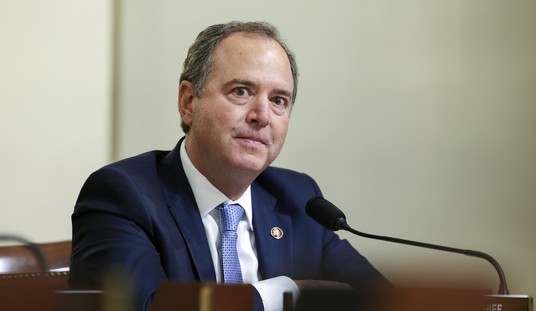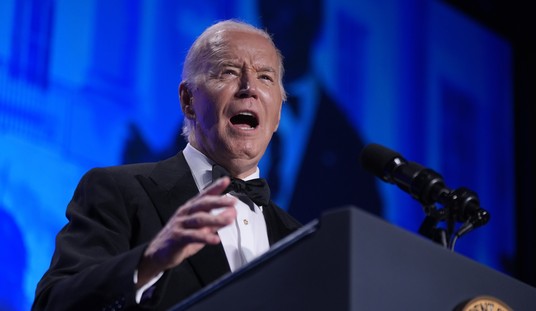The mortgage foreclosure crisis in this country may have been superseded by events in Japan, Libya and elsewhere for now, but it’s still taking a toll. And in the context of evidence that an Obama-initiated homeowner subsidy program to stem the tide isn’t working, a new federal agency stands poised to extract $20 billion from lenders on behalf of borrowers who for the most part shouldn’t have received loans in the first place.
Key housing market indices don’t look good. Some 3.8 million foreclosure notices on nearly 3 million homes went out in 2010, according to the Irvine, Calif.-based RealtyTrac. That 3.8 million represents an increase of 2 percent over 2009 and 23 percent over 2008. And this figure doesn’t include another 7 million or more homes that respected financial analysts such as Laurie Goodman and Alan Abelson say could wind up in the foreclosure pipeline over the next few years.
There’s more grim news. The Santa Ana, Calif.-based CoreLogic this month revealed that at the end of Fourth Quarter 2010, fully 11.1 million residential properties, or 23.1 percent of all properties with a mortgage, had negative equity. In other words, the amount owed on the loans exceeded the market value of the property, a condition commonly known as being “underwater.” The 23.1 percent figure is up from 22.5 percent for Third Quarter 2010. If home prices fall by another 5 to 10 percent in 2011, as many analysts now project, about a third of all homes in this country will be underwater.
The Obama administration knows these are scary numbers. The problem is that its preferred approaches to warding off calamity are at odds with economic and legal processes that could rectify the situation in a reasonably short time.
Back in March 2009, the administration unveiled its Home Affordable Modification Program, or HAMP. Worked out in consultation with FDIC Chairwoman Sheila Bair and other top federal officials, HAMP would stave off foreclosures and subsequent repossessions by reworking delinquent mortgages on more borrower-friendly terms. Policy ought to favor struggling homeowners over struggling banks, the argument went, especially in light of the latter’s reckless and at times fraudulent lending practices.
HAMP is designed to cover mortgages on primary residences that: meet the current Fannie Mae/Freddie Mac loan purchase ceiling of $729,750; were originated prior to 2009; and have been delinquent for more than 30 days. Participation is voluntary. Applicants may enter the program at any time through 2012, subject to income and other restrictions. A participating homeowner must go through a trial modification lasting 90 days and, if accepted, enter a permanent modification lasting up to five years. Under the latter, a monthly mortgage payment (including property taxes, property insurance and homeowner dues) would represent no more than 31 percent of pretax household income, and could be achieved either by lowering the interest rate, extending the term, or both.
Recommended
All sorts of good things supposedly would result. At least 3 to 4 million borrowers would keep their properties. Banks could avoid having to acquire, manage and sell a huge inventory of potentially unsalable properties. And neighborhoods with high concentrations of troubled mortgages would be stabilized. It seemed like a win-win situation, fully worth the $75 billion authorization, two-thirds of which would come out of the Troubled Asset Relief Program (TARP) and the other third out of the coffers of Fannie Mae and Freddie Mac, each under federal conservatorship since September 2008.
Two years later, the program seems short on winners. A preliminary report by the Treasury Department last August showed that of the 1.3 million trial modifications approved, 616,000 had been cancelled. And through this past December, the program permanently modified only 521,000 mortgages. In addition to the implicit bank-to-borrower subsidies, HAMP has disbursed a little over $1 billion in federal incentive payments to mortgage servicers for making permanent modifications.
New data suggests this energy and money have been misapplied. According to the Office of the Comptroller of the Currency and the Office of Thrift Supervision, 33.8 percent of all permanently modified mortgages wound up in default after just six months. Fully 51.4 percent did so after 12 months. The 12-month percentage breakdowns by mortgage type, as reported in the March 15 Wall Street Journal, are as follows: Fannie Mae, 52.5 percent; Freddie Mac, 55.8 percent; government-guaranteed (FHA, VA, RHS), 62.3 percent; private, 58.2 percent; portfolio loans, 30.1 percent.
Many Republicans want to cut off funding for HAMP. “In an era of record-breaking deficits, it’s time to pull the plug on these programs (like HAMP) that are actually doing more harm than good for struggling homeowners,” said House Financial Services Committee Chairman Spencer Bachus, R-Ala. The Obama administration and allied consumer advocates oppose such action. “Ending HAMP now, without a meaningful alternative in place, would mean that struggling homeowners would have far fewer ways of coping with the worst housing crisis in generations,” remarked Treasury Department Acting Assistant Secretary for Financial Stability Timothy Massad.
Actually, there is a meaningful alternative: financial responsibility. In other words, lenders shouldn’t make loans to mortgage borrowers who pose unsound credit risks. Homebuyers shouldn’t apply for loans that they can’t pay back. And the government shouldn’t be conscripting the general population, and in particular responsible homeowners, into subsidizing irresponsible homeowners. Were HAMP to “succeed” on its own terms – i.e., prevent or block millions of foreclosures – it would be enabling the very sorts of behavior that led to the current crisis. A successful bailout inevitably creates the basis for future bailouts. A quick demise of the program, by contrast, would speed up the foreclosure and resale processes, and restore the mortgage lending industry to full capitalization. Though foreclosures reached an all-time high in 2010, they’ve also recently slowed to a 36-month low, RealtyTrac notes.
Unfortunately, a problem emerged about a half-year ago. And the official response may severely gum up the works for years. Many mortgage lenders, in their haste to process seemingly insurmountable piles of foreclosure paperwork, have committed factual errors. This highly-publicized “robo-signing” problem, while real, has been overwhelmingly procedural rather than substantive. Few borrowers have lost their homes because of those mistakes.
But the Obama administration, rather than treat the snafus as manageable, is using them as a pretext for assuming further control over the mortgage industry. And it has a potent means of persuasion in the new Consumer Financial Protection Bureau (CFPB), whose acting director is Harvard law professor-turned-economic populist Elizabeth Warren. The CFPB, an independent agency within the Federal Reserve System created by last year’s Dodd-Frank financial reform legislation, doesn’t formally begin operations until July. But already it is baring its teeth in fulfilling its mission of protecting borrowers from deceptive or fraudulent practices.
Nobody disputes the need to investigate and punish willful deception or fraud. But several federal agencies already exist to perform those functions. The CFPB’s underlying purpose appears to be mandatory credit allocation.
Under Warren’s direction, the bureau recently completed and mailed to Bank of America, JPMorgan Chase, Wells Fargo and other major lenders a 27-page proposed “settlement” all but forcing them into federal receivership. She has received enthusiastic help from at least 10 other federal agencies and all 50 state attorneys general, led by Iowa AG Tom Miller. Not only would the settlement impose extensive reporting and administrative burdens upon the banks, it also would mandate a reduction of outstanding principal for many loans and require lenders to make more loans in lower-income communities. The reported tab: $20 billion.
Treasury Secretary Timothy Geithner is trying to finesse the issue, especially given that Republicans are now in charge of the House of Representatives. In a recent letter to Rep. Bachus, he assured that CFPB would “not be a party to any formal settlement with mortgage servicers.” But at the same time he admitted at a House Banking subcommittee hearing this past Tuesday that he had asked Warren to advise federal agencies and state attorneys general to collaborate on devising an appropriate settlement with servicers. Her agency, he conceded, has been active in settlement talks.
The Consumer Financial Protection Bureau’s Warren is less subtle. She defends the necessity of her agency this way: “Political attacks against federal and state law enforcement officials for responding to alleged legal violations are dangerous. We know what can happen when laws aren’t fairly or consistently enforced because of political pressure, and it doesn’t end well for American families, businesses, or for the economy.” She insists her agency merely consolidates activities of seven different agencies, thus creating a more efficient way of setting and enforcing rules for responsible lending.
Senate Banking Committee Chairman Richard Shelby, R-Ala., doesn’t quite see it this way. He accuses Warren of leading “what appears to be nothing less than a regulatory shakedown” of major banks. He and other key Republicans on Capitol Hill have proposed funding her agency through annual appropriations rather than the Fed.
Bank of America CEO Brian Moynihan, meanwhile, has criticized the proposed forced principal reductions as “no panacea.” He adds, “When you start helping certain people and don’t help other people, it’s going to be very hard to explain the difference.” Moynihan and other lending executives argue that the provisions of the settlement, taken as a whole, will delay an already lengthy foreclosure process that averaged more than 500 days this past January, according to the Jacksonville, Fla.-based Lender Processing Services. Bank of America estimates the extra wait at 200 days; JPMorgan Chase puts it as high as a full year.
And do the presumed beneficiaries deserve the help? On the whole, one would be hard-pressed to say yes. BoA’s Moynihan states that as many as 80 percent of foreclosure sales during the Second Quarter 2010 involved borrowers who had not made a single payment over the past year. Such a statistic is almost calculated to infuriate homeowners for whom a single late payment is anathema.
The Obama administration, then, is delivering an expensive one-two punch to bail out borrowers. HAMP represents the “carrot” part, enticing borrowers behind (and often way behind) on their payments to refinance on highly favorable terms. The Consumer Financial Protection Bureau represents the “stick” part, coercing lenders into effectively handing over billions of dollars to borrowers unable to repay their loans, whether or not as HAMP participants. Either way, the result is a misallocation of resources. In the administration’s egalitarian worldview, however, it’s a “fair” allocation.
In a way, it’s unfair to single out the Obama administration for opprobrium. The Bush and Clinton administrations each contributed mightily to the present situation by operating on the assumption that homeownership is a moral right. Federal officials, with prodding from Congress and “civil-rights” groups, combined enticement and intimidation (especially via the Community Reinvestment Act) to encourage banks, thrifts, subprime lenders, Fannie Mae and Freddie Mac to step up lending volume, especially to low- and moderate-income borrowers. Much of this was driven by an obsession with increasing homeownership among blacks and Hispanics. That said, the current administration shouldn’t be absolved of responsibility for aggravating the crisis placed on its lap.
The explosion of defaults, foreclosures and seizures over the past several years, not surprisingly, has reduced the national homeownership rate. From a peak of 69.2 percent in Fourth Quarter 2004, it fell to 66.5 percent in Fourth Quarter 2010. For the time being, this should be seen as a healthy development. Owning a home remains a good long-term investment, delivering a 6 percent average annual return during 1978-2008, but it’s not for everyone. Many people simply can’t, or won’t, repay a mortgage. While slowing down foreclosures will prevent the homeownership rate from slipping further, it also has unintended drawbacks. In a recent working paper titled, “Are Delays to the Foreclosure Process a Good Thing?” economists Eric Higgins (Kansas State University) and Charles Calomiris (Columbia University) answer in the negative. Delays, they conclude, impose hidden costs on homebuyers by: 1) injecting uncertainty among consumers who in turn delay their housing consumption; 2) impeding new construction; 3) creating uncertainly among lenders who in turn are more reluctant to underwrite loans; and 4) exacerbating neighborhood decay.
Undaunted, the current administration is intent on blocking as many foreclosures as possible. Advancing an overarching narrative that casts strapped homeowners as victims, Obama and top officials see it as their moral responsibility to socialize the costs of years of asset overleveraging. With Elizabeth Warren at his side, he’s got an authentic zealot on the case.

























Join the conversation as a VIP Member